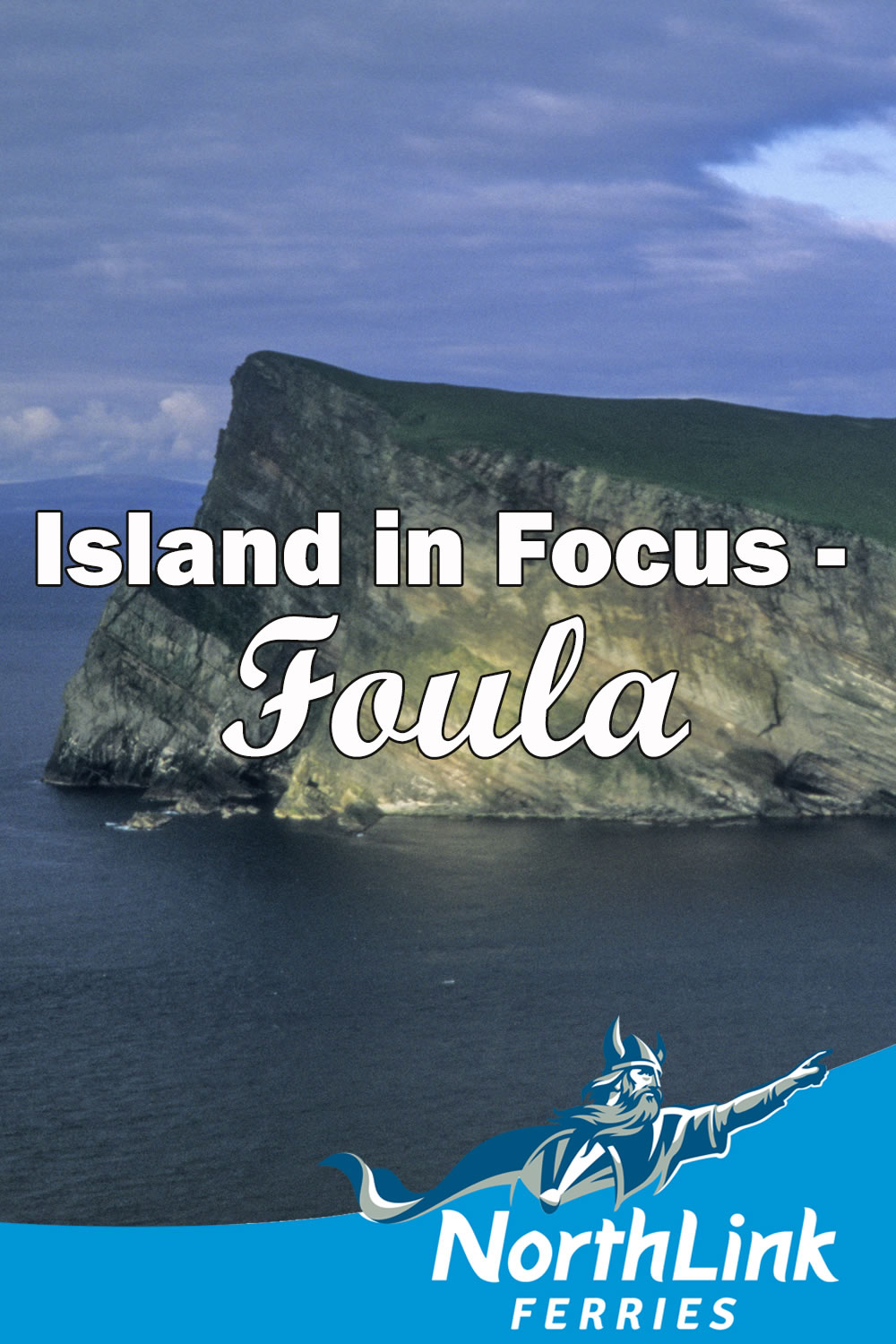Island in Focus – Foula
We think that Foula is a lovely island which is dramatic and remote. It lies 20 miles to the west of the Shetland Mainland.
These days Foula still uses the Julian calendar even though the rest of the UK adopted the Gregorian calendar in 1752. In Foula, Christmas Day is observed on 6 January and New Years Day on 13 January!
The coast is nearly completely rockbound with only one beach, close to the exposed pier, where boats are winched out of the water when not in use to prevent them being damaged!
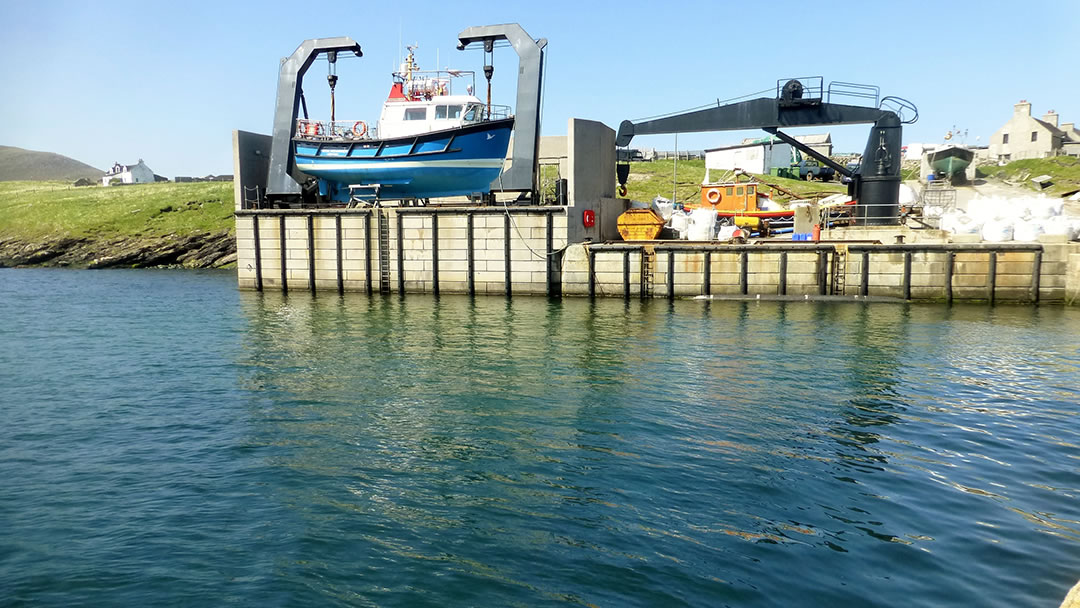
It is best to visit Foula in the summer and even then, trips to Foula may need to be extended by a few days as a result of rough seas or fog, so make sure your plans are flexible.
The foot passenger ferry (booking is essential) operates two times a week (three times in summer), sailing from Walls to Ham in 2 hours and carries 12 passengers. Booking is essential. In the summer there are some sailings from Scalloway.
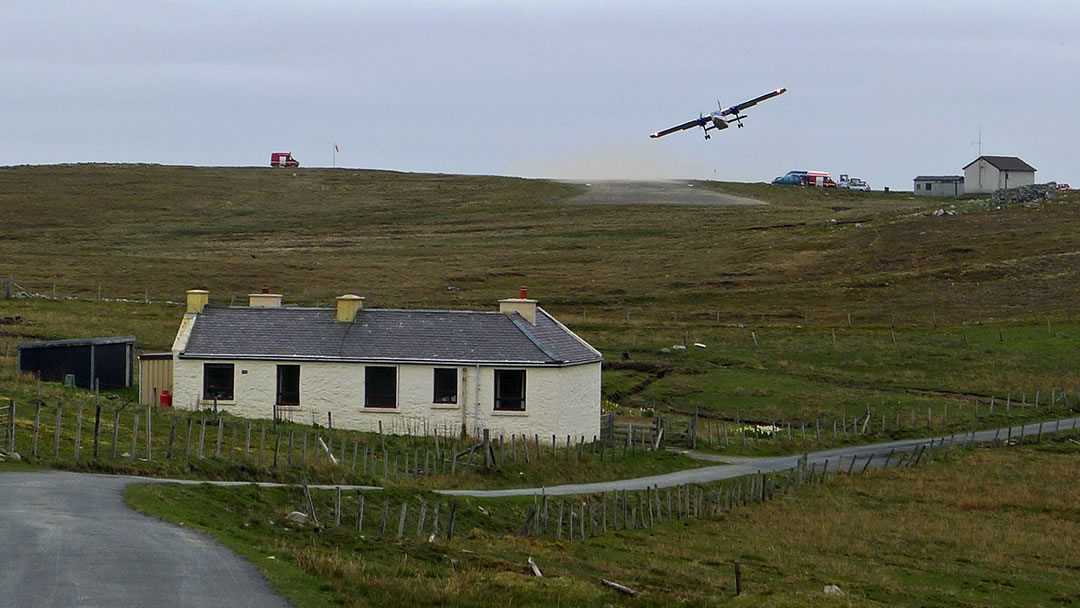
There are also flights from Tingwall Airport in an eight-seat aeroplane. Taking this option will allow you a few hours to explore the island.
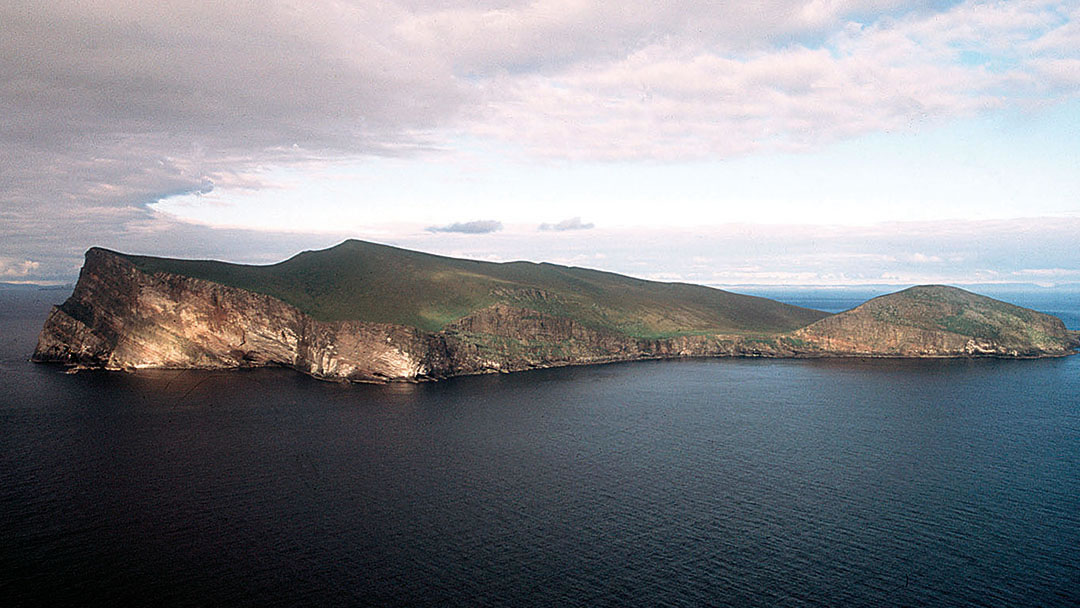
Five dramatic peaks
Foula has an amazing shape. The island is 2.5 miles long and has a narrow and fertile coastal strip to the east and north. This is Hametown and Ham and it is where all the 16 crofts, belonging to Foula’s (approximately) 30 inhabitants, are located.
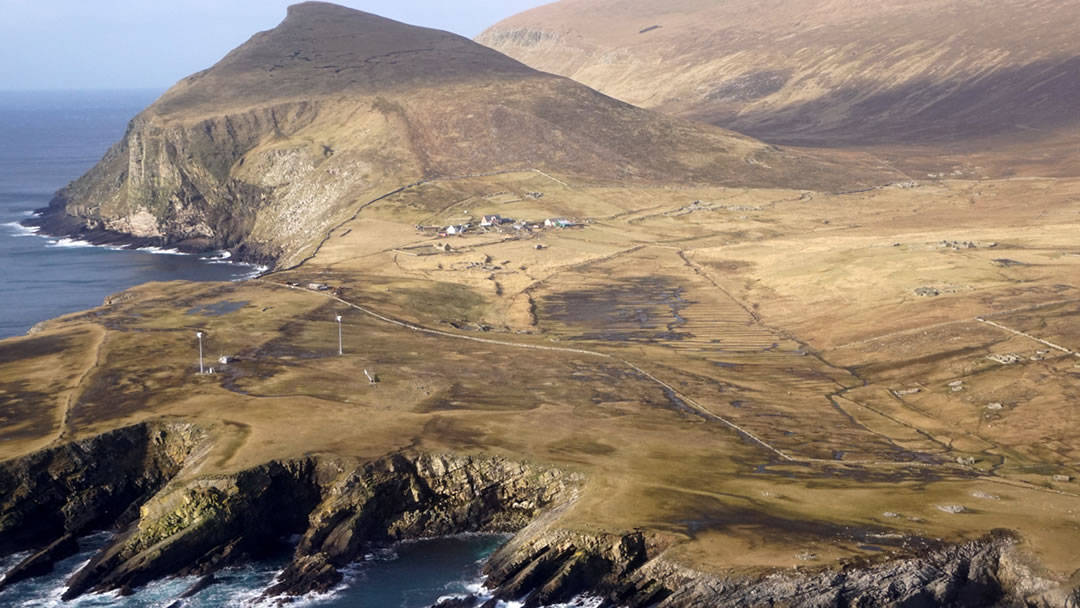
The rest of the island is dominated by five dramatic peaks called Da Noup, Hamnafield, Da Sneug (highest at 1371 feet), Da Kame, and Soberlie. Foula is definitely an island for keen walkers and birdwatchers.
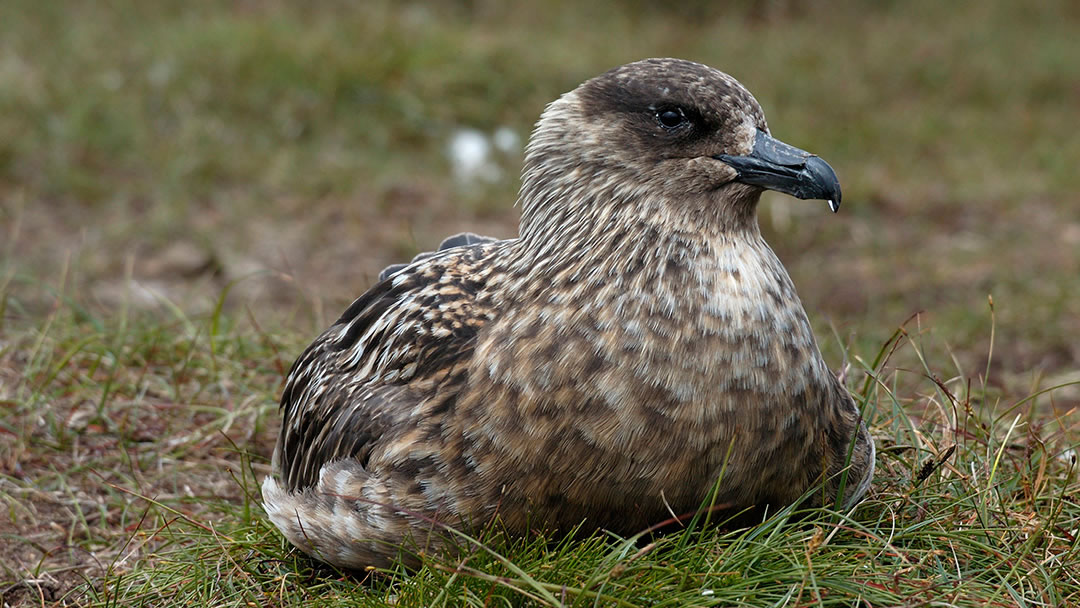
Birdwatchers paradise
The name Foula comes from the Old Norse Fuglaey, “bird island”. The island is remote, surrounded by rich feeding grounds, lightly inhabited by people, has few predators and much of the land cannot be farmed, so it is the ideal habitat for birds. The island is designated as a Site of Special Scientific Interest (SSSI) for its seabird colonies and blanket bog.
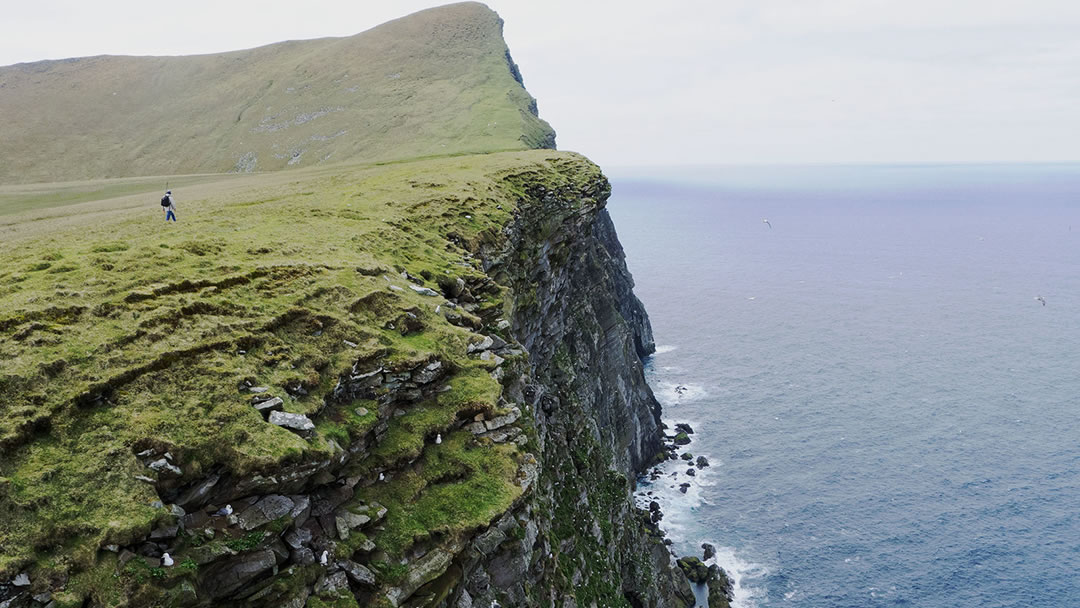
On the west of Foula, Da Kame is a cliff which rises to 1233ft and visiting here is a highlight of any trip to Foula. Da Kame and the other cliffs on the west are home to thousands of nesting seabirds. The rest of the land is occupied by moorland birds (Foula has the world’s largest colony of bonxies) and waders occupy every small loch on the island. The remote location of Foula means that migrating birds often make landfall here, and unusual birds from America and Siberia have been spotted.
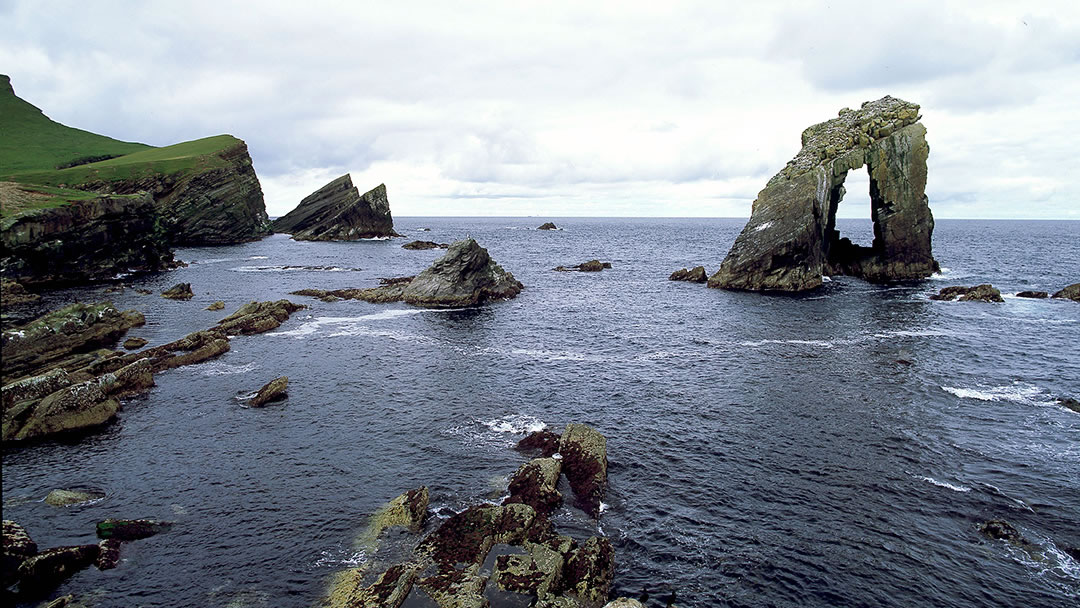
The Gaada Stack
Along the dramatic coastline of Foula (which has also been designated a Site of Special Scientific Interest) there are other treats to see, so don’t forget your camera. The Gaada Stack is a 131ft sea stack punctured by a hole. You will find it at the north end of the island.
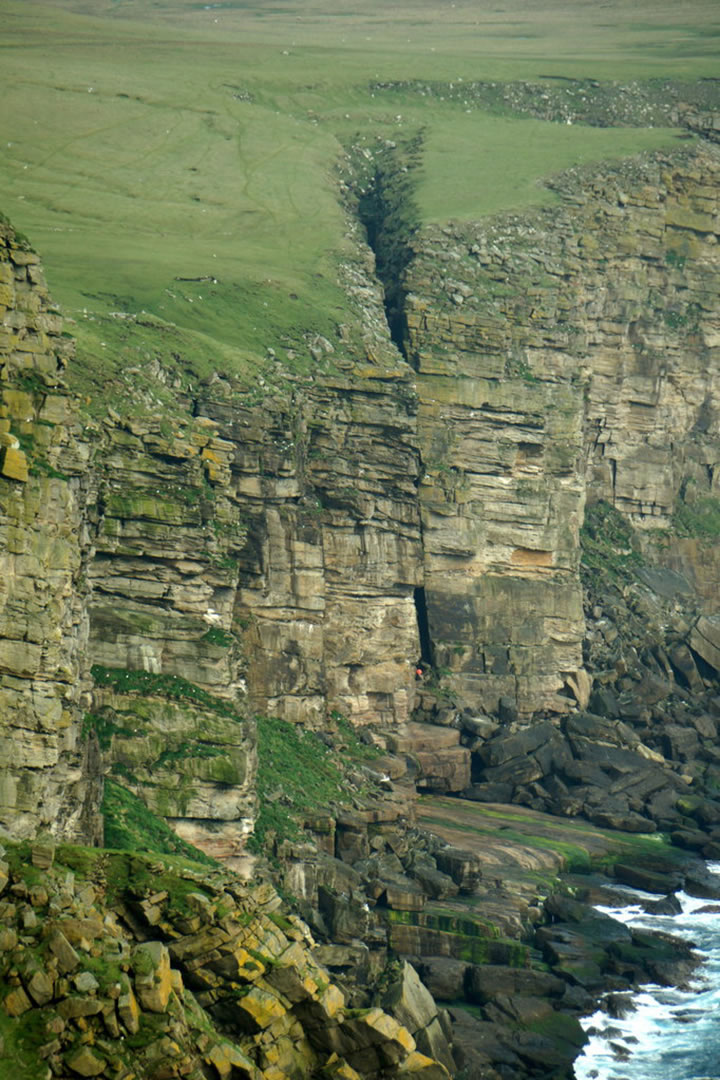
If you go to the south west of Foula you will find Da Sneck o’ da Smaalie. This is a 98ft deep dark rock fault which cuts down towards the sea. You can get down (with an experienced guide only) to see the seabird colonies under the cliffs.
Foula’s coastline became briefly famous in 1914, when RMS Oceanic hit fierce tides at the Shaalds o’ Foula two miles east of Foula. The Shaalds are a reef which comes to within four feet of the surface at low tides. RMS Oceanic sank here – the ship was owned by White Star Line, the shipping company who lost the Titanic two years before. Between 1899 and 1901, RMS Oceanic was the largest ship in the world. It was also the first passenger ship to be lost in the First World War.
A lighthouse was built in 1986 at South Ness. This helps ocean-going tankers pass safely between Foula and the Shetland mainland.
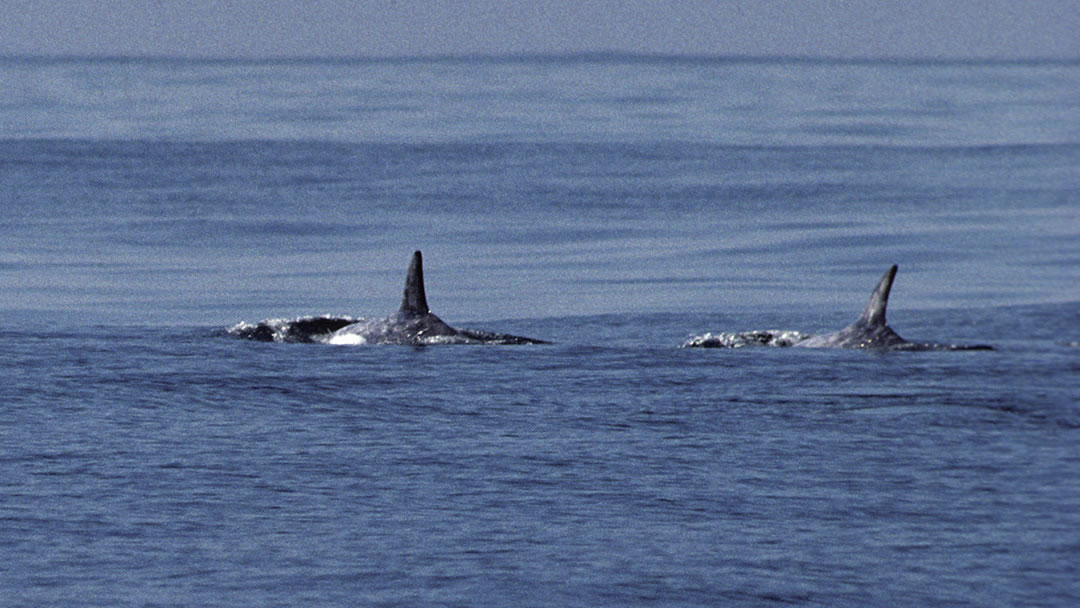
Foula’s wildlife, industry, and history
As well as being an amazing island for birds, Foula has more amazing wildlife on offer.
It is easy to spot families of Grey and Common Seals and schools of Killer Whales, and you may even find Harbour Porpoises following the Foula ferryboat!
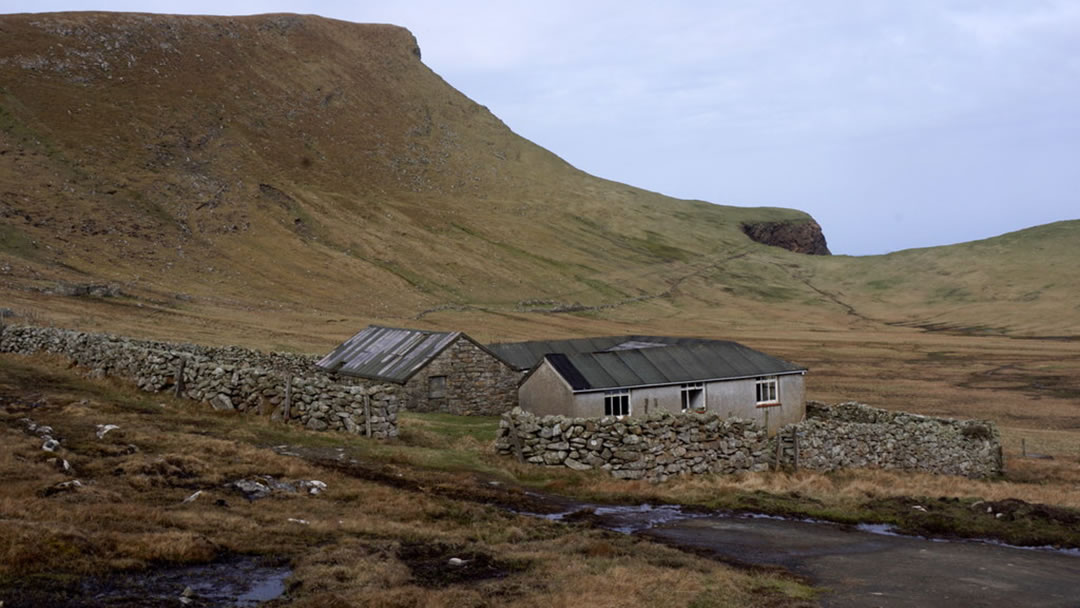
Foula is so remote that it has its own subspecies of fieldmouse, and some of the many wildflowers that cover the island are remnants of ancient woodland plants.
Shetland ponies roam freely and the sheep on Foula are multi-coloured native Shetland sheep that graze on the cliffs but can also eat seaweed.
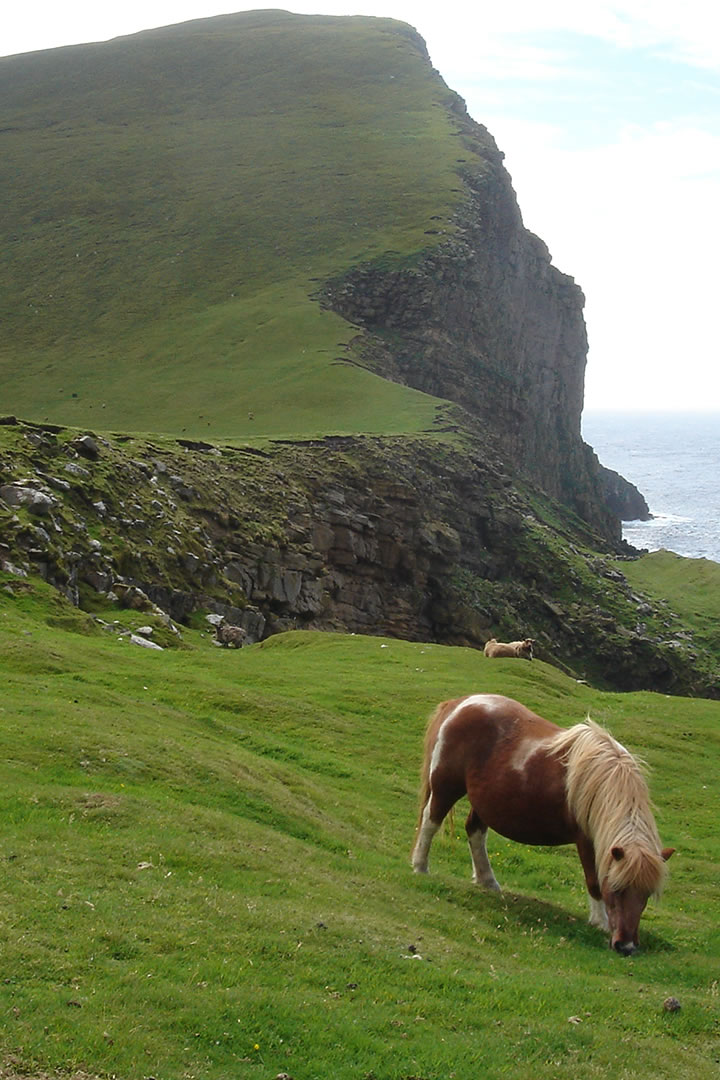
Foula’s inhabitants are crofters who get their income from fishing and shellfish, sheep farming, Shetland ponies and ornithological tourism. The island has a strong tradition of caring community values.
Foula has been inhabited since Neolithic times and was conquered in 800AD by Norsemen. You will still find many Norse place names in Foula.
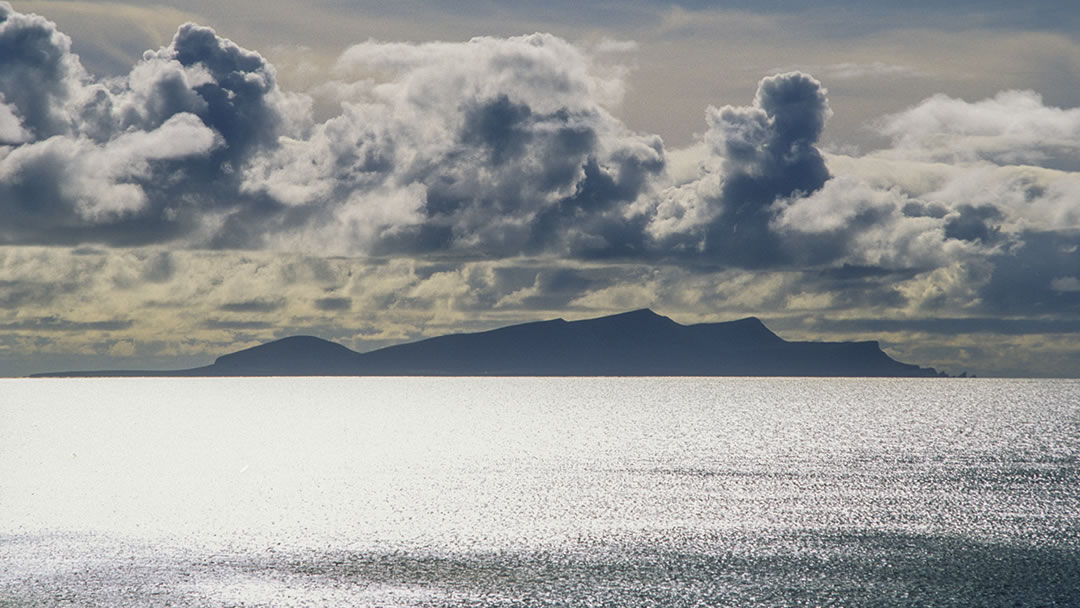
Being remote
Foula is so remote that it is often the last place to be influenced by changes which have affected the rest of Shetland. For instance, it was one of the last places Norn was spoken, and the last place in Scotland where Udal Law was upheld. These days Foula still uses the Julian calendar even though the rest of the UK adopted the Gregorian calendar in 1752. As a result, in Foula, Christmas Day is observed on 6th January and New Year’s Day on 13th January!
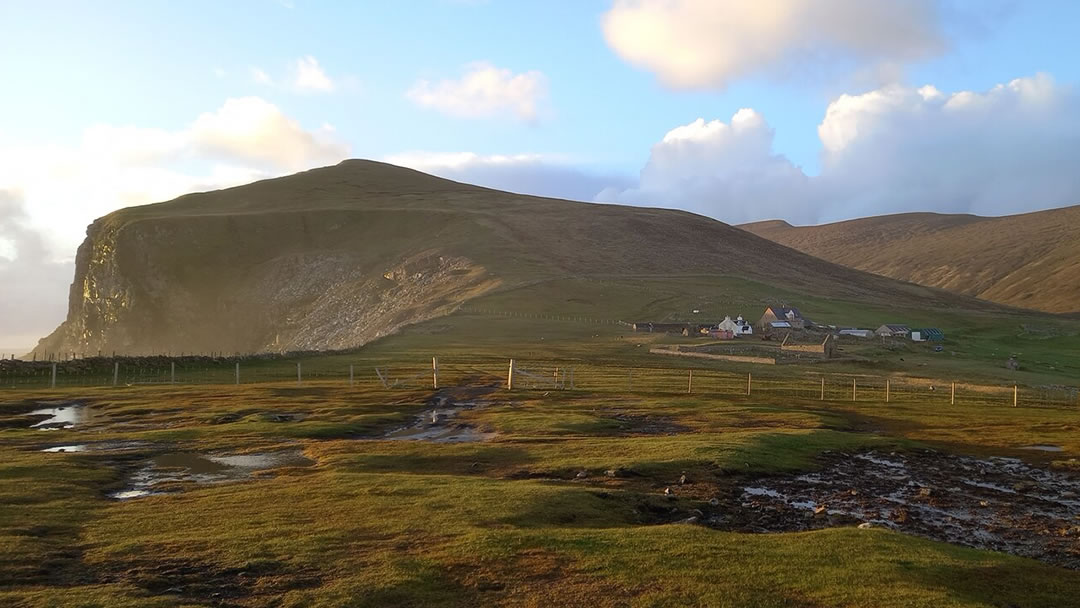
Being remote is not always easy though, and Foula suffered from extended periods of being cut off from the outside world and unable to obtain supplies. This ended in the 70s when the gravel airstrip was built.
Another consequence of being remote was that, in 1720, when a smallpox epidemic struck, the 200 islanders on Foula had no immunity. It is said that only 6 people were left to bury the dead. The island was repopulated by new families from the Shetland Mainland but much of the oral history was lost.
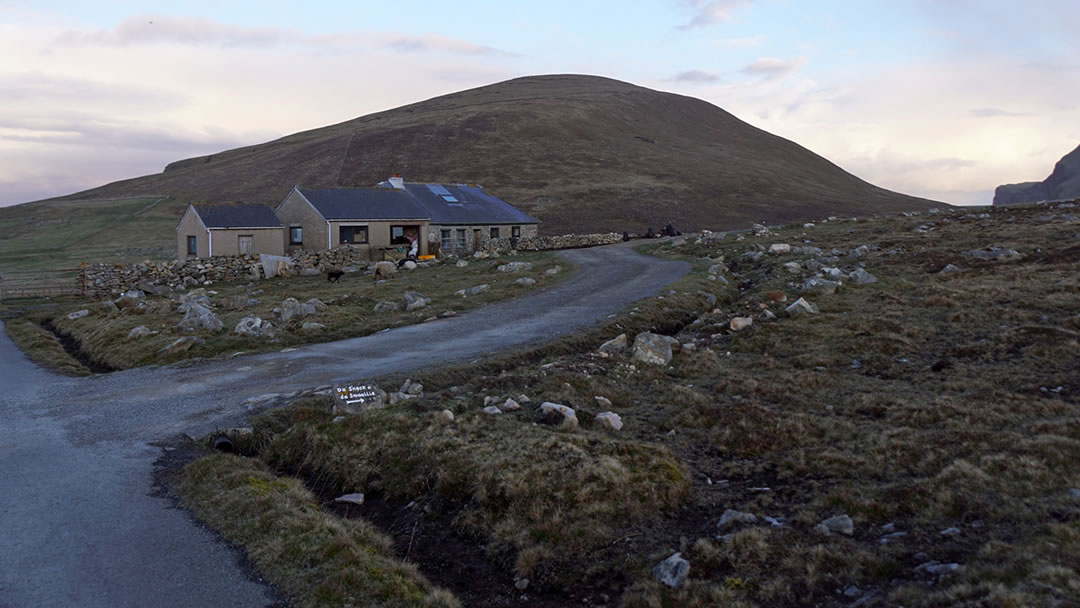
Foula was used as a location for Michael Powell’s 1937 film, ‘The Edge of the World’ – a fictional account of the evacuation of St Kilda. The title of that film sums up Foula very well.
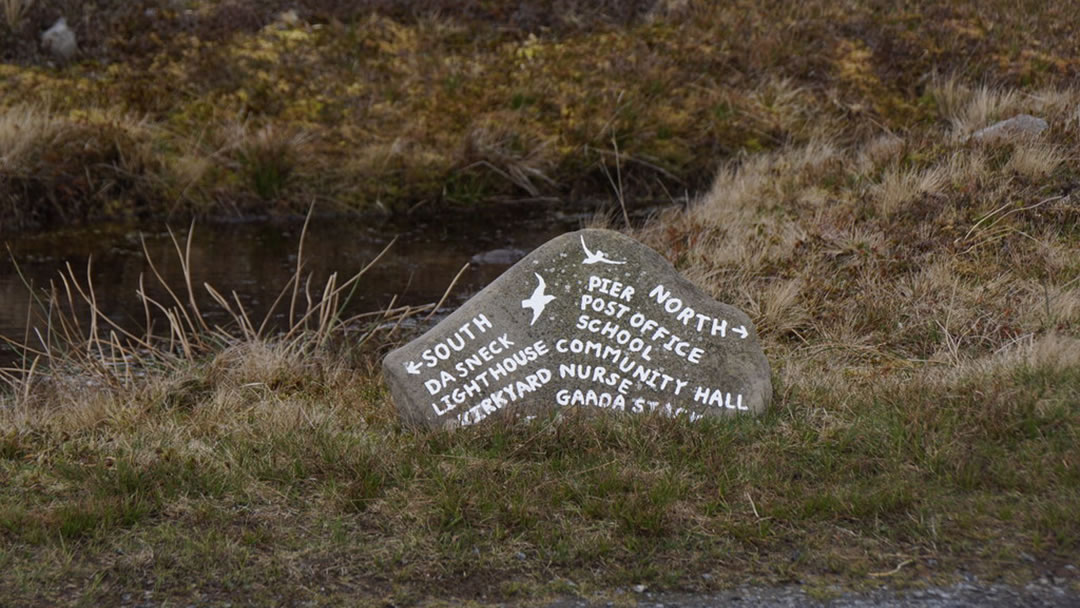
Foula is remote indeed, but it is very well worth the effort to reach the island – especially if you are a birdwatcher. Please note that Foula has accommodation, but no pub or shop (apart from a post office), so make sure you bring supplies for your visit. For more details on Foula, please visit www.foulaheritage.com
Foula is a beautiful, wild, and dramatic island which will appeal to the explorer in you.
 By Magnus Dixon
By Magnus DixonOrkney and Shetland enthusiast, family man, loves walks, likes animals, terrible at sports, dire taste in music, adores audiobooks and films, eats a little too much for his own good.
Pin it!
